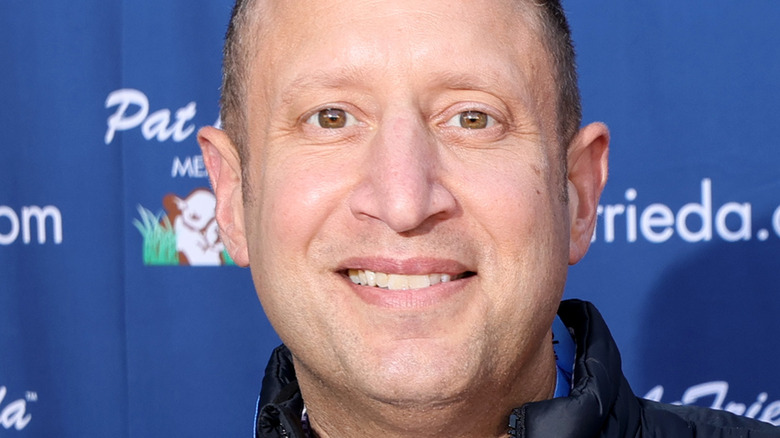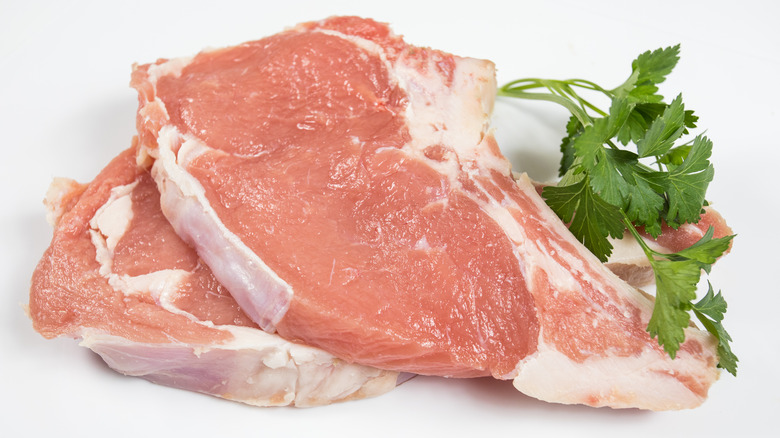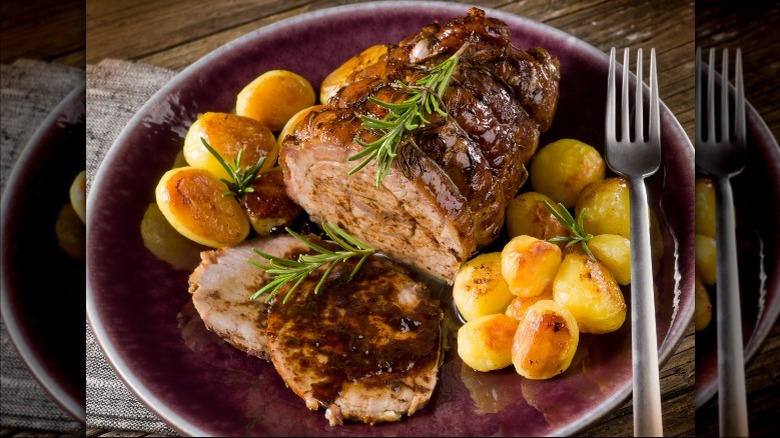The Biggest Veal Myth You Can Stop Believing, According To Pat LaFrieda - Exclusive
For many people, from self-professed non-foodies to veteran industry experts, veal evokes an immediate cringe, conjuring images of suffering baby animals evocative of a fine dining past lacking in the sustainability and approachability standards that define today's food scene. Historically, the production of veal has involved separating baby cattle and giving them little access to food or movement before slaughtering at a young age. Unsurprisingly, veal has come to be seen by many as the equivalent of animal abuse — and production is roughly a third of what it was 20 years ago, according to Statista.
However, after decades of coming to see this particular cut of meat in one harsh light, is it possible that it's due for a change in perspective? Pat LaFrieda is among those who would say there's more that we need to understand. "When I started, veal was more celebrated than beef," the fourth-generation celebrity butcher observed in an exclusive interview with Tasting Table. But today, that couldn't be further from the truth, thanks to "misconceptions of veal."
This sentiment, coming from someone highly respected in the beef industry, raises a lot of questions. What has changed exactly? Why is the blanket shaming of veal such a misguided notion? What does the public today need to know? Speaking to Tasting Table, LaFrieda shed some light on many of those inquiries, and he may have you reconsidering veal.
What's the deal with veal?
Several myths about veal have made their way into the mainstream and LaFrieda wants to see that change. "Veal is not baby beef," he explained.
What people are more likely thinking of is Bob veal, a type of extremely young veal made from cows that are only a few weeks old and typically more confined than regular veal calves. However, as the American Veal Association states, Bob veal only accounts for about 15% of veal processed in the U.S., so it's not as widespread as you might think. While LaFrieda acknowledged "there is veal that is derived from baby beef," that chain restaurants use, he said restaurants in New York City use "something coveted."
In reality, veal today is aged for up to half a year before it's processed. And as LaFrieda pointed out, "steaks that we eat are 22 months of age," adding, "Is that a baby, when an adult is 22 months? Not really." Furthermore, calves aren't confined to a crate or deprived of food. In the past, "there were some growers [who] would restrain the movement of the veal," but LaFrieda said times have changed. "Over the last 60 years, they've found great ways to not have to do that and grow the same quality veal," he stated.
Veal's benefit to the beef industry
The impact on the cows isn't the only thing to consider. Producing veal also helps maintain a sustainable dairy industry. Veal typically comes from male Holstein cows. Female Holsteins are used for their high-volume milk production, but what about the males "that obviously are not going to yield milk?" LaFrieda asked. "Holsteins are not good for making steaks," so using them to make veal is actually "a sustainable way for the milk industry to continue and [provide] a great product," he explained.
As for veal's controversial past, LaFrieda admitted that "it's a hard story to tell for anyone to understand that this inhumane way of treating animals has been corrected, and the finished product is like it used to be." However, looking towards the future, he wants more people to embrace and appreciate veal for what it really is. "What we were all worried or horrified about has been corrected, and veal is just an amazing byproduct of the milking industry," he shared.


